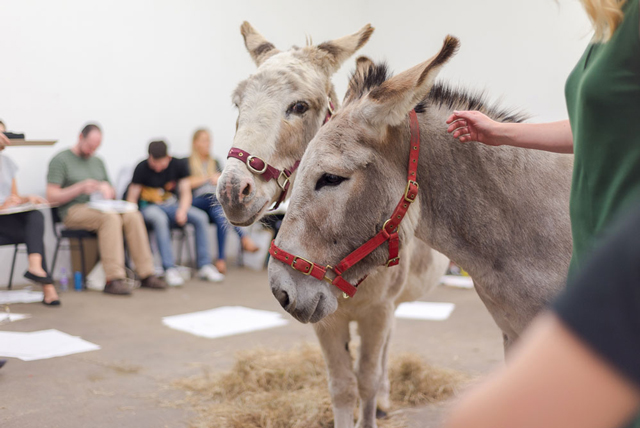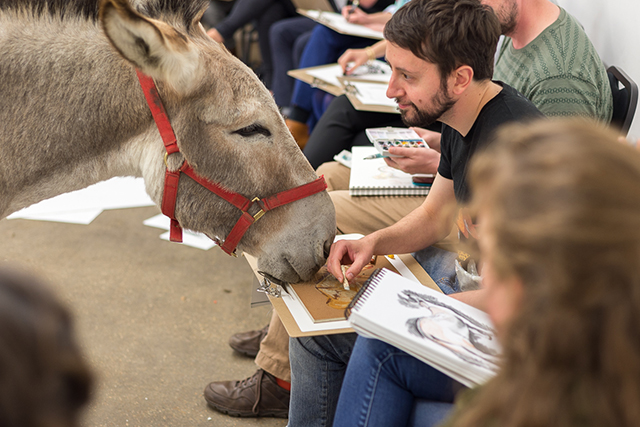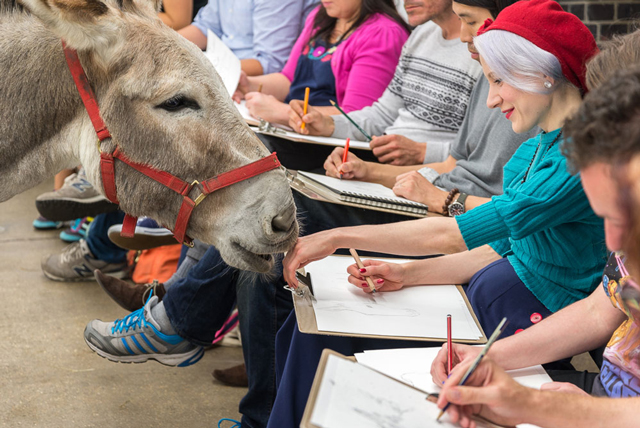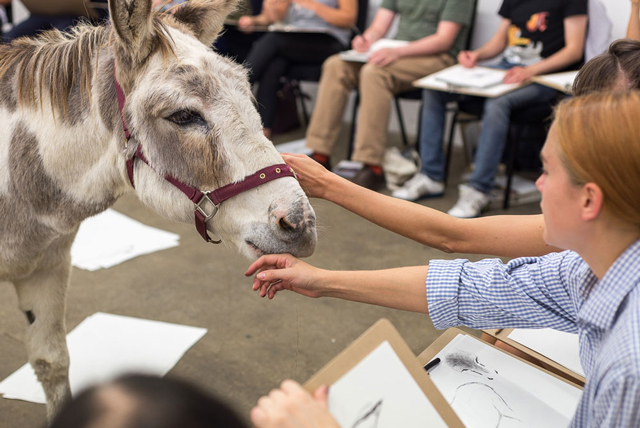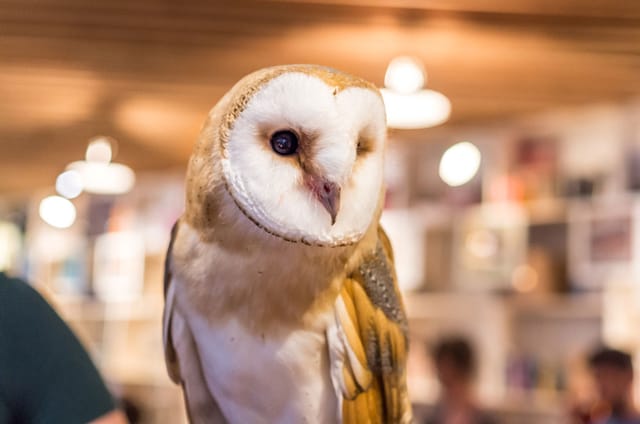Artist Jennie Webber runs life drawing classes with a difference – the models range from bats to iguanas, owls, wolves, donkeys and even miniature pigs. We caught up with Jennie to find out more…
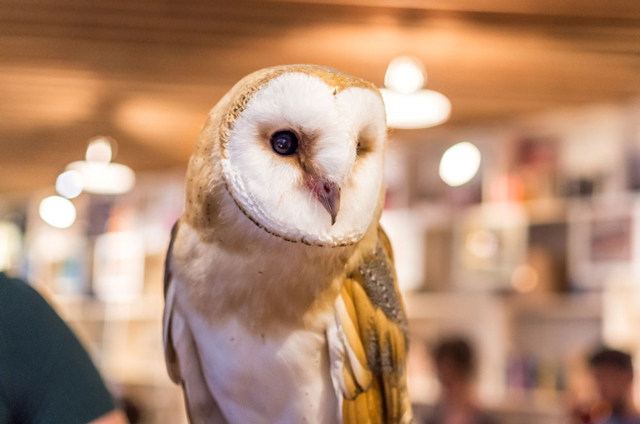
If your New Year's resolution is to pick up a pencil and start drawing, then where better than one of Wild Life Drawing's classes? Aimed at artists of all ages and abilities, they come with the added bonus of getting up close and personal with a selection of both wild and domestic creatures. Grafik spoke to founder Jennie Webber to get the lowdown on exactly what happens at one of her classes...
Can you tell us a bit about your background and what led you to set up Wild Life Drawing?
I’m an illustrator and printmaker, and my inspiration has always stemmed from animals and nature. I’m also a country girl at heart, and after moving to London to study at Masters Degree in Illustration at Camberwell College, I felt that there was a real disconnect between those living in the city and the natural world. I wanted to bridge that gap somehow, and inspire people with the wonder of animals through creativity.
I think drawing is one of the best ways to understand and appreciate a subject, through taking the time to observe and depict. And through drawing, people start to understand the animals; their muscle structure, the way their feathers are arranged, or how they’ve evolved. Animal welfare and conservation communication are central themes of the drawing classes and I wanted to ensure that they were done in the right way, in the right locations and with the animals’ best interests at heart.
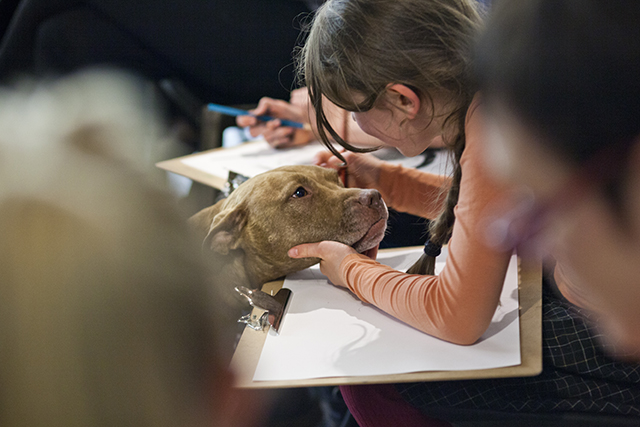
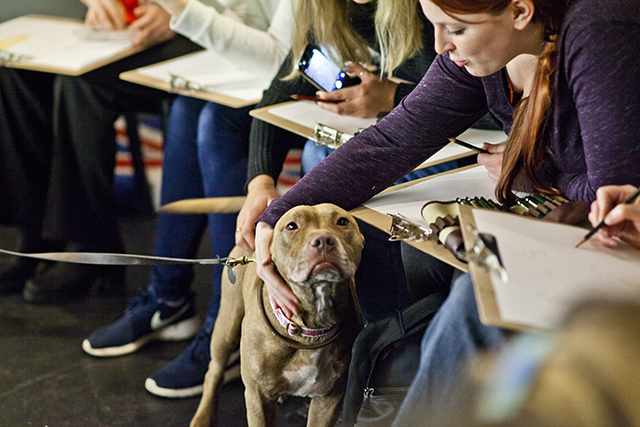
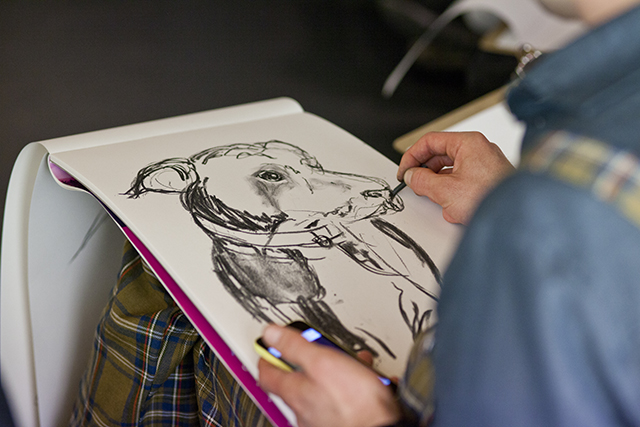
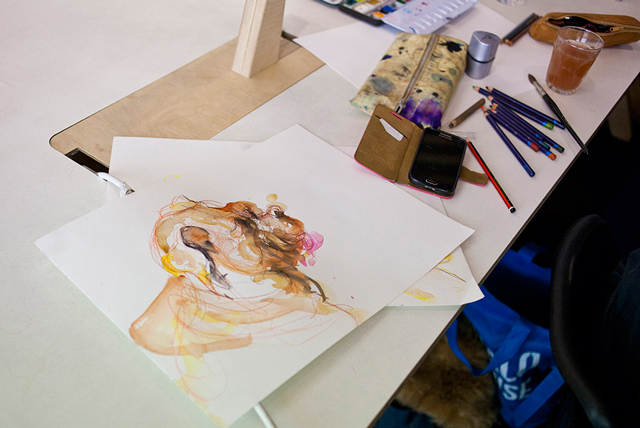
Can you explain how the classes work? What sort of people usually take part?
Generally the classes last for two hours and in that time I aim for attendees to take home drawings that they’re pleased with as well as fun facts about the animals they’ve just drawn. We start by introducing the animals, with a short talk from the handlers. We’ll learn about the species, what they eat, about their lives in the wild and – over the course of the class – we’ll discuss any conservation issues affecting the species and any ways in which we’re able to help. I am always on hand for any creative advice and encouragement and I ensure I pay special attention to newcomers.
Everyone is welcome at Wild Life Drawing and we get a wide variety of folks coming along, both artists and animal lovers and everyone else in between! I also do classes for families and children, plus special events for Halloween, Christmas and Valentine’s Day.
Which animals featured in the first classes you held, and which have you featured since then? Where do the animals come from?
The first class took place in June 2014 and we drew a variety of owl species (due to this, owls now have a very special place in my heart and are one of my favourite animals to draw) and since then we’ve drawn lizards, donkeys, bats, birds of prey, snakes, wolves, parrots, tortoises, mini-beasts, meerkats and skunks to name but a few. Special classes have been held on location – on the city farms, at festivals and on RSPB nature reserves where we drew seabird colonies in their natural habitat.
Wild Life Drawing works with the finest animal sanctuaries and organisations to put on these events. All the animals are fully used to humans and different environments and are always accompanied by experienced handlers, their welfare is our highest priority. Money from tickets sales goes towards their continued hard work for the conservation and protection of the animals.
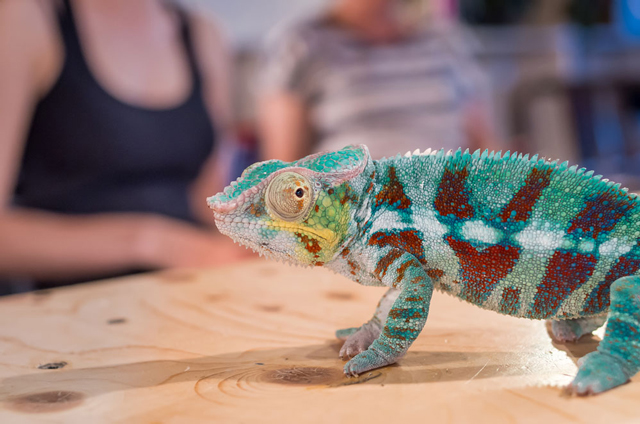
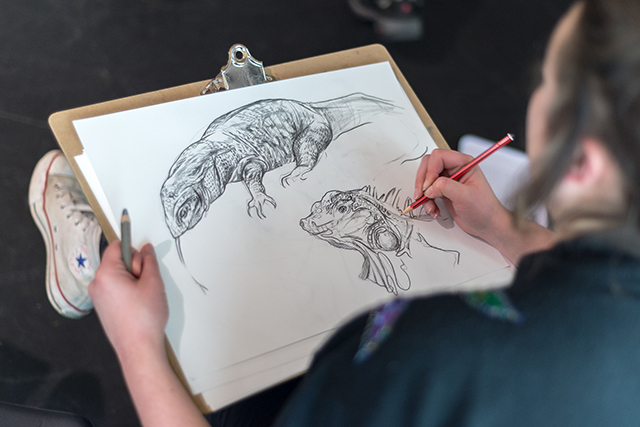
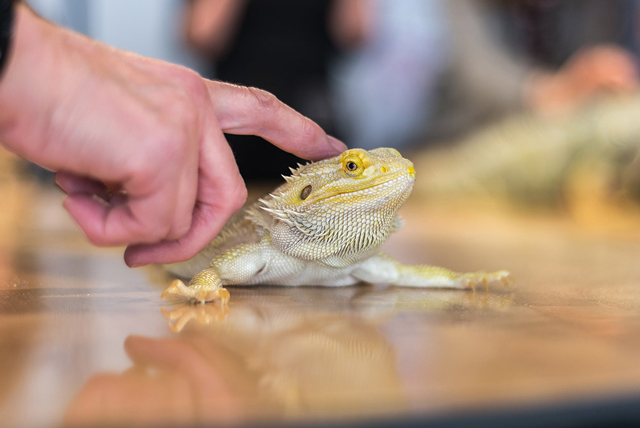
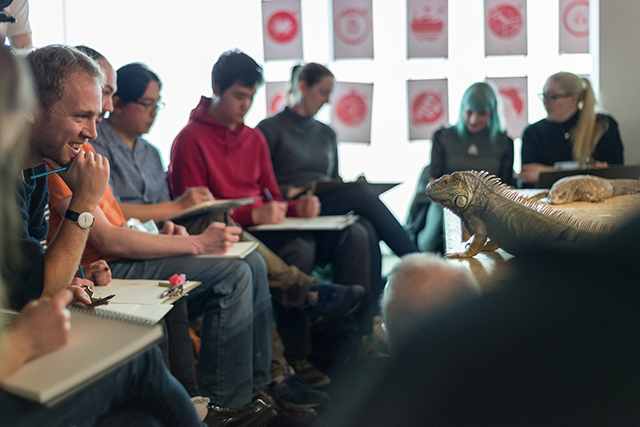
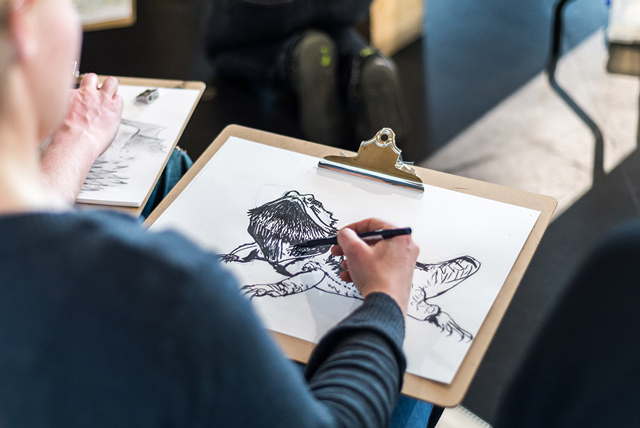
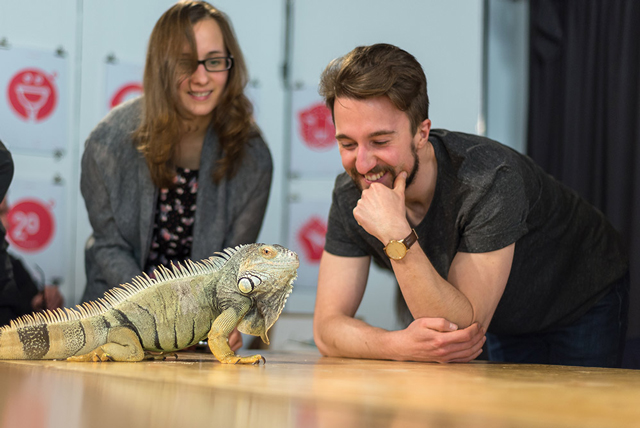
How do the animals cope with being under such close scrutiny? And how do you keep animals such as wolves still?
We don’t…You simply can’t ask animals to pose for you. Letting the animals explore or act naturally is one of the most interesting aspects of the classes and provides a deeper understanding of their behaviour. Drawing animals from life is definitely a different kettle of fish, but there are a few tips that I give out at the start of each class to help people out. I encourage attendees to be bold with their mark making; drawing quickly and not being too precious about their sketches.
Having 4-5 drawings on the go at any one time is also a good idea, to work on a variety of positions concurrently. Lastly, some people find it easier to take pictures and get the initial form down on paper, then fill in the colour, texture and detail from the animals themselves. And being drawn doesn’t bother them one bit…
What’s been the response from people taking the classes?
It’s been overwhelmingly positive. I think people appreciate the chance to observe the animals at close quarters, and learn more about animals that they wouldn’t necessarily come into contact with.
I don’t want Wild Life Drawing to be gimmicky, so I’m working hard to keep innovating the classes. Currently I’m running a series of Natural History drawing classes at Somerset House, which aim to delve deeper into natural history and investigate the ways in which the natural world has inspired and influenced human culture. I’m always open and clear about the organisations I work with, and ensure everyone understands the background of the animals and how/why they’re in captivity.
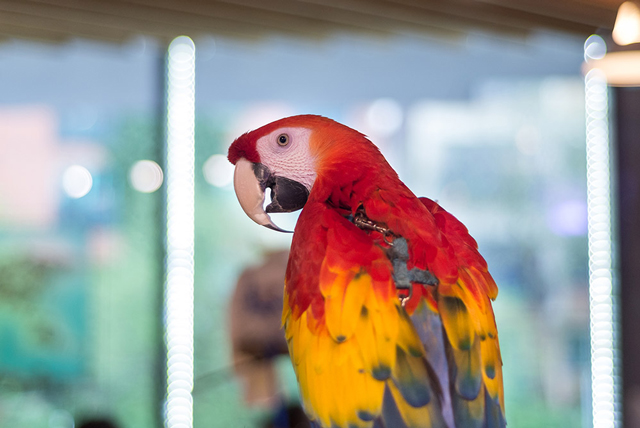
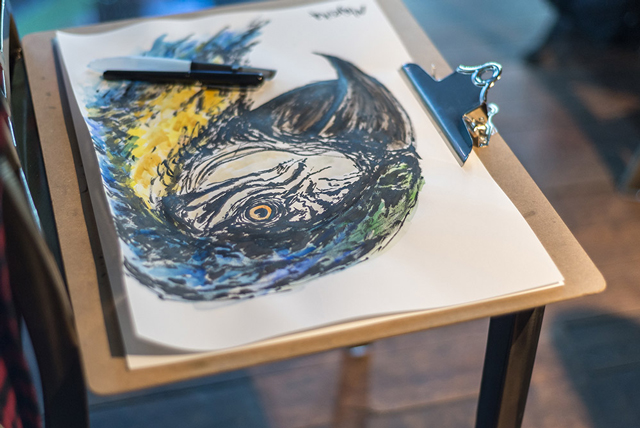
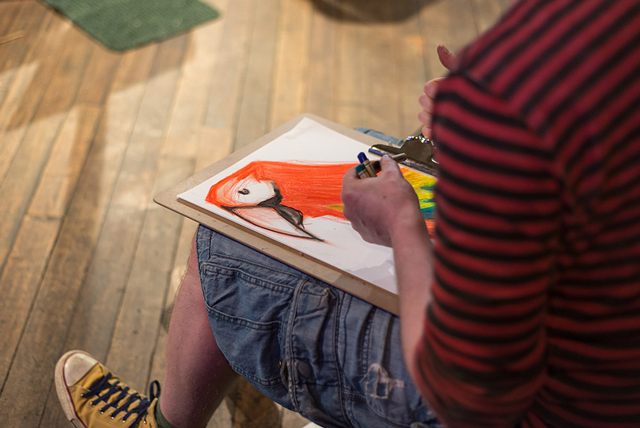
Which animals are the most popular to draw and why?
Owls are always popular, the large lizards always fascinate people and the meerkats always capture hearts. But regardless of the species, everyone always loves the animals – they’re the stars.
One of my favourite classes of late has to be the charity event I put on in collaboration with Battersea Dogs & Cats Home. Everyone was positively swooning over the dogs…
Have you had any funny moments during the classes?
Aside from the classic toilet humour (there has been plenty of clearing up all kind of droppings since the drawing classes began) some of the funniest moments have been the unpredictable behaviour of the animals. We’ve had geckos jumping onto people’s heads, donkeys nibbling on drawings and miniature pigs escaping. There’s never a dull moment.
Which creatures can people look forward to drawing in 2016?
To start the year, we have the third instalment of the Natural History series exploring the Life Cycle of Reptiles, plus Ferrets & Polecats at the end of January and Miniature Pigs in February. There will be more classes on location; on farms, in aquariums and out in the countryside, as well as taking place in different cities across the UK. Chameleons, Tropical Birds and Baby Owls are all on the cards too.
More information and tickets are available at wildlifedrawing.co.uk
